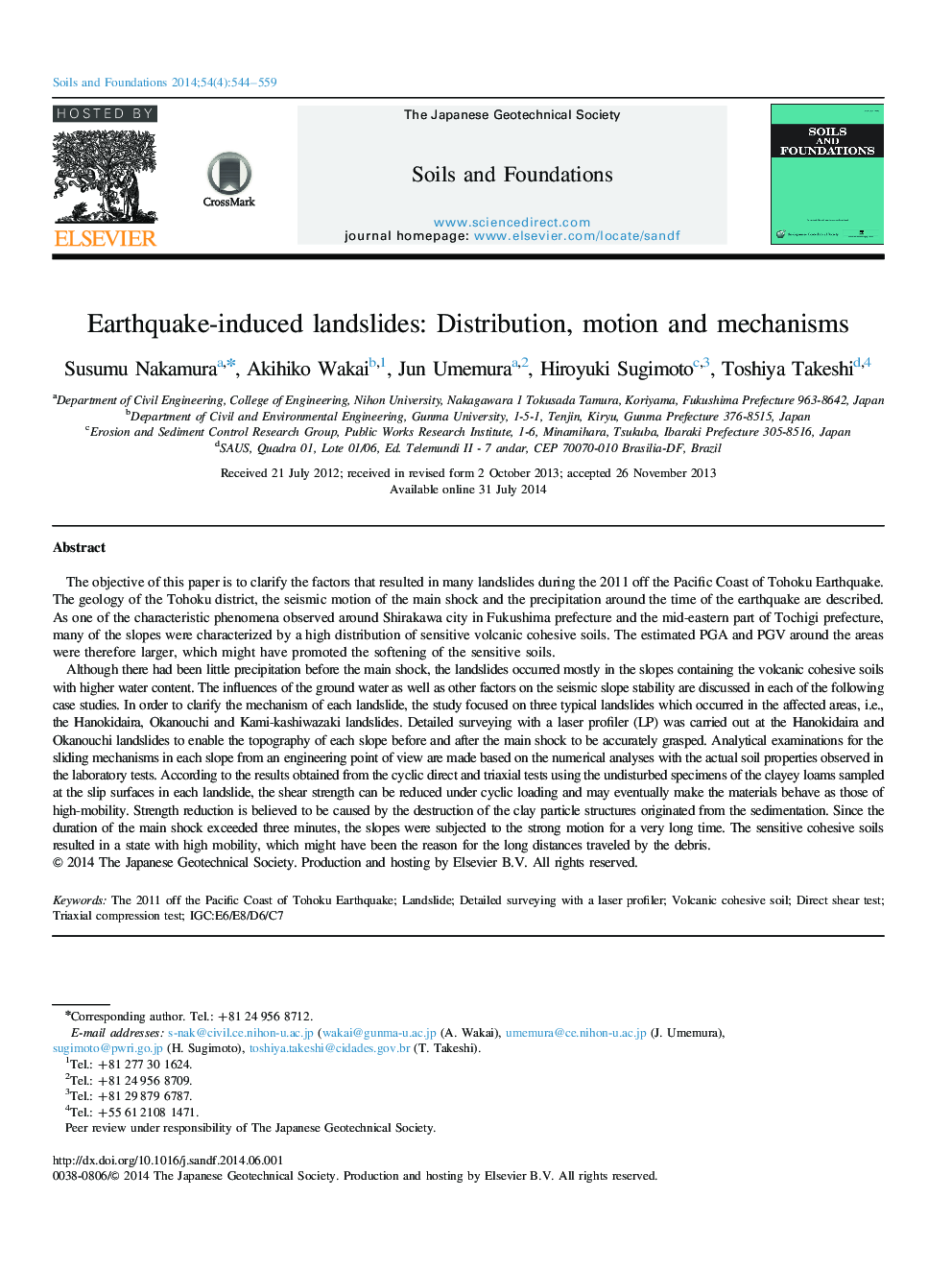| کد مقاله | کد نشریه | سال انتشار | مقاله انگلیسی | نسخه تمام متن |
|---|---|---|---|---|
| 307236 | 513346 | 2014 | 16 صفحه PDF | دانلود رایگان |
The objective of this paper is to clarify the factors that resulted in many landslides during the 2011 off the Pacific Coast of Tohoku Earthquake. The geology of the Tohoku district, the seismic motion of the main shock and the precipitation around the time of the earthquake are described. As one of the characteristic phenomena observed around Shirakawa city in Fukushima prefecture and the mid-eastern part of Tochigi prefecture, many of the slopes were characterized by a high distribution of sensitive volcanic cohesive soils. The estimated PGA and PGV around the areas were therefore larger, which might have promoted the softening of the sensitive soils.Although there had been little precipitation before the main shock, the landslides occurred mostly in the slopes containing the volcanic cohesive soils with higher water content. The influences of the ground water as well as other factors on the seismic slope stability are discussed in each of the following case studies. In order to clarify the mechanism of each landslide, the study focused on three typical landslides which occurred in the affected areas, i.e., the Hanokidaira, Okanouchi and Kami-kashiwazaki landslides. Detailed surveying with a laser profiler (LP) was carried out at the Hanokidaira and Okanouchi landslides to enable the topography of each slope before and after the main shock to be accurately grasped. Analytical examinations for the sliding mechanisms in each slope from an engineering point of view are made based on the numerical analyses with the actual soil properties observed in the laboratory tests. According to the results obtained from the cyclic direct and triaxial tests using the undisturbed specimens of the clayey loams sampled at the slip surfaces in each landslide, the shear strength can be reduced under cyclic loading and may eventually make the materials behave as those of high-mobility. Strength reduction is believed to be caused by the destruction of the clay particle structures originated from the sedimentation. Since the duration of the main shock exceeded three minutes, the slopes were subjected to the strong motion for a very long time. The sensitive cohesive soils resulted in a state with high mobility, which might have been the reason for the long distances traveled by the debris.
Journal: Soils and Foundations - Volume 54, Issue 4, August 2014, Pages 544–559
